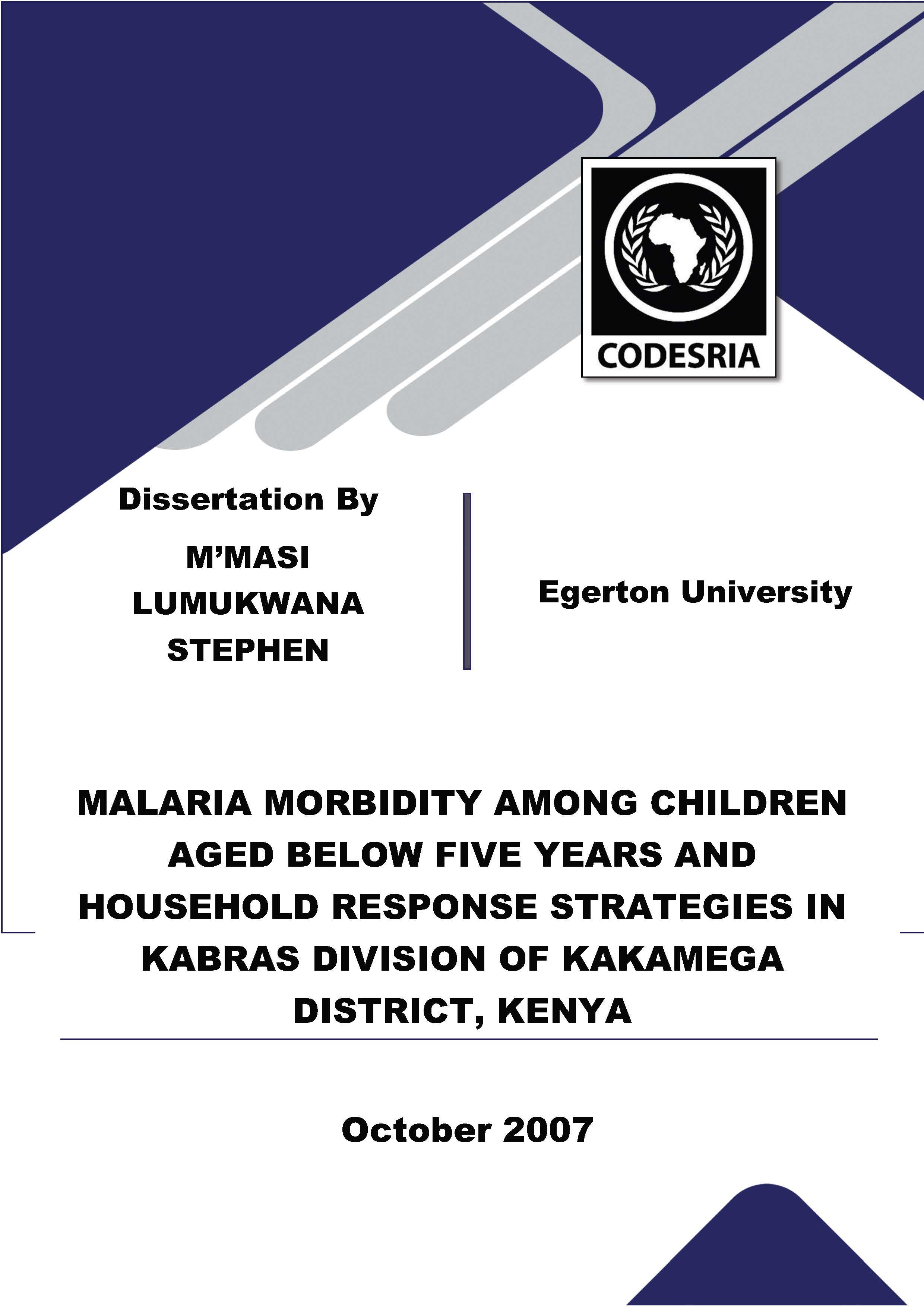MALARIA MORBIDITY AMONG CHILDREN AGED BELOW FIVE YEARS AND HOUSEHOLD RESPONSE STRATEGIES IN KABRAS DIVISION OF KAKAMEGA DISTRICT, KENYA
Keywords:
MALARIA MORBIDITY, CHILDREN, KENYASynopsis
Malaria is a major cause of morbidity as well as a principle cause of death among children aged below five years in Kakamega district. This notwithstanding, not much is known about the disease burden and response strategies at the household level. This study thus sought to determine malaria prevalence among children aged below five years, document response strategies and determine the influence of household socio-economic characteristics on the response strategies. Primary data was collected through a crosssectional household survey, involving 200 household heads and 10 key informants. Data collected was then analyzed using both descriptive and inferential statistics. Results from reveal that: (1) Malaria prevalence among under-fives was estimated to be 94 percent with over 70 percent of children experiencing 2-6 malaria episodes per year, at household level. (2) Treatment of malaria at home by use of anti-malaria and other drugs is commonly practiced in the study area. (3) Only 43 percent of children suffering from malaria sought treatment in health facilities due to geographical and economic barriers. (4) The affected households adopt coping strategies aimed at minimizing costs of medication (5) Adoption of the recommended malaria prevention measures such as use of treated nets and sound environmental sanitation is evidently low. (6) Socio-economic characteristics such as respondents’ education level, housing, household income, access to health services, and environmental sanitation and malaria control information significantly influence malaria prevalence and adoption of malaria response strategies. The study makes the following recommendations to the Ministry of Health and other stakeholders in malaria control: (1) Home treatment strategy should be promoted and strengthened through education and awareness among the primary healthcare providers (mothers/carers and agents of drug supplies). (2) Effective malaria prevention involving sound environmental sanitation and increased coverage of treated nets should be promoted, emphasizing community participation, and health education (3) Malaria control interventions should mitigate the health and economic impacts through strengthening and enhancing existing viable malaria coping strategies in the study area.
Downloads






